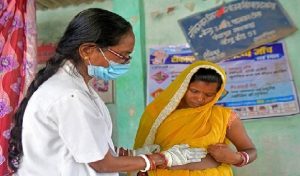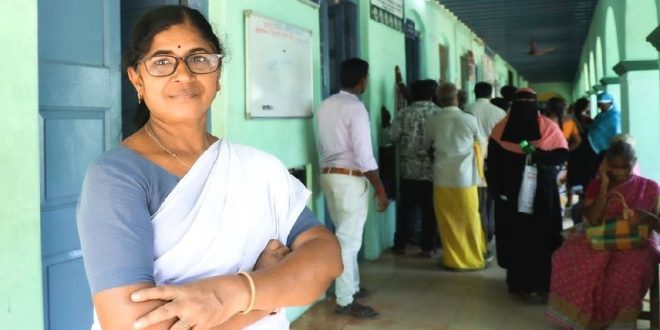03-07-2023
Bureau Report + Agencies + BBC
NEW DELHI: Nurses and midwives are vital for India’s healthcare system, but it faces challenges due to high demand and limited resources. Kathija Bibi, a recently retired nurse who received a government award for overseeing more than 10,000 successful deliveries, looks back on the changes she saw in attitudes towards women’s healthcare in her 33-year-long career.
 “I am proud that not a single one of the 10,000 babies I delivered died on my watch,” says Kathija Bibi, 60, who counts this as the highlight of her career.
“I am proud that not a single one of the 10,000 babies I delivered died on my watch,” says Kathija Bibi, 60, who counts this as the highlight of her career.
The state’s health minister, Ma. Subramanian, told the BBC that Khatija recently received a government award as no death was recorded during her years of service.
During the three decades she worked at a government health centre in the southern state of Tamil Nadu, India has transformed from a country with a high maternal mortality rate to one that is closer to the global average. She says she has also witnessed positive changes in people’s attitudes to girls being born, and towards having fewer children.
Kathija was pregnant herself when she began working in 1990.
“I was seven months pregnant… yet I was helping other women. I returned to work after a short maternity break of two months,” Kathija recalls. “I know how anxious women are when they go into labour, so making them comfortable and confident is my first priority.”
 Kathija, who retired in June, radiates calm composure. Her clinic – in the predominantly rural town of Villupuram, 150km (93 miles) south of Chennai city – is not equipped to do Caesarean sections so if she detected any complications, she immediately sent pregnant women to the district hospital.
Kathija, who retired in June, radiates calm composure. Her clinic – in the predominantly rural town of Villupuram, 150km (93 miles) south of Chennai city – is not equipped to do Caesarean sections so if she detected any complications, she immediately sent pregnant women to the district hospital.
Kathija’s inspiration is her mum Zulaika, who was also a village nurse. “I used to play with syringes in my childhood. I got so used to the smell of hospital,” she recalls.
From a young age, she understood the importance of her mother’s work in providing healthcare to poor and semi-literate rural women. At that time, private hospitals were rare and women from all backgrounds relied on the state maternity home which is now called a primary health centre.
“When I started, there was one doctor, seven helpers and two other nurses,” says Kathija. “Work was very hectic in the first few years. I couldn’t look after my children. I missed family functions. But those days gave me a very valuable learning experience.”
In 1990, India’s maternal mortality rate (MMR) stood at 556 deaths per 100,000 live births. In the same year, India recorded 88 infant deaths per 1,000 live births.
The latest government figures show that MMR stands at 97 per 100,000 live births, and the infant mortality rate at 27 per 1,000 live births.
 Pressmediaofindia
Pressmediaofindia




